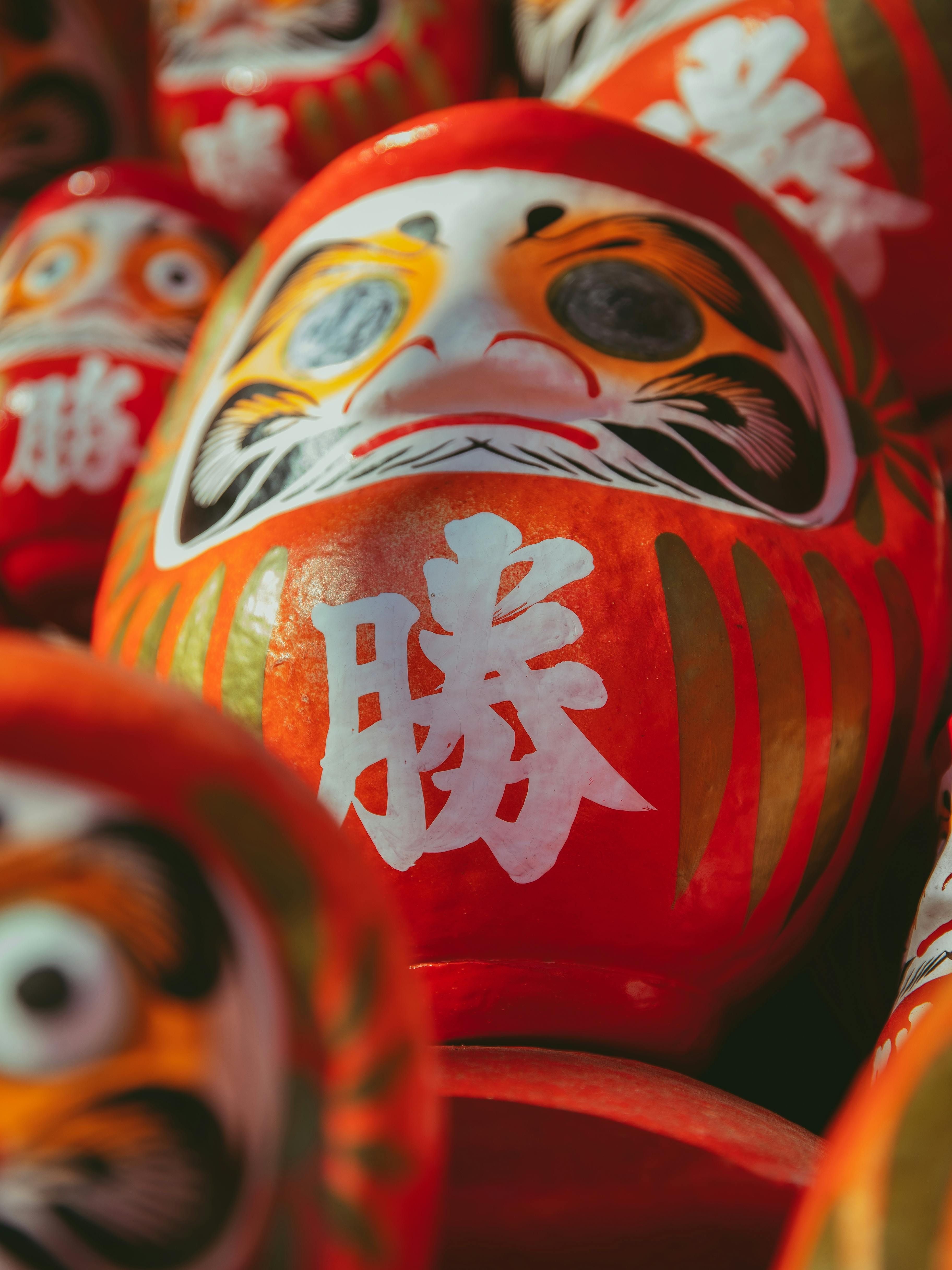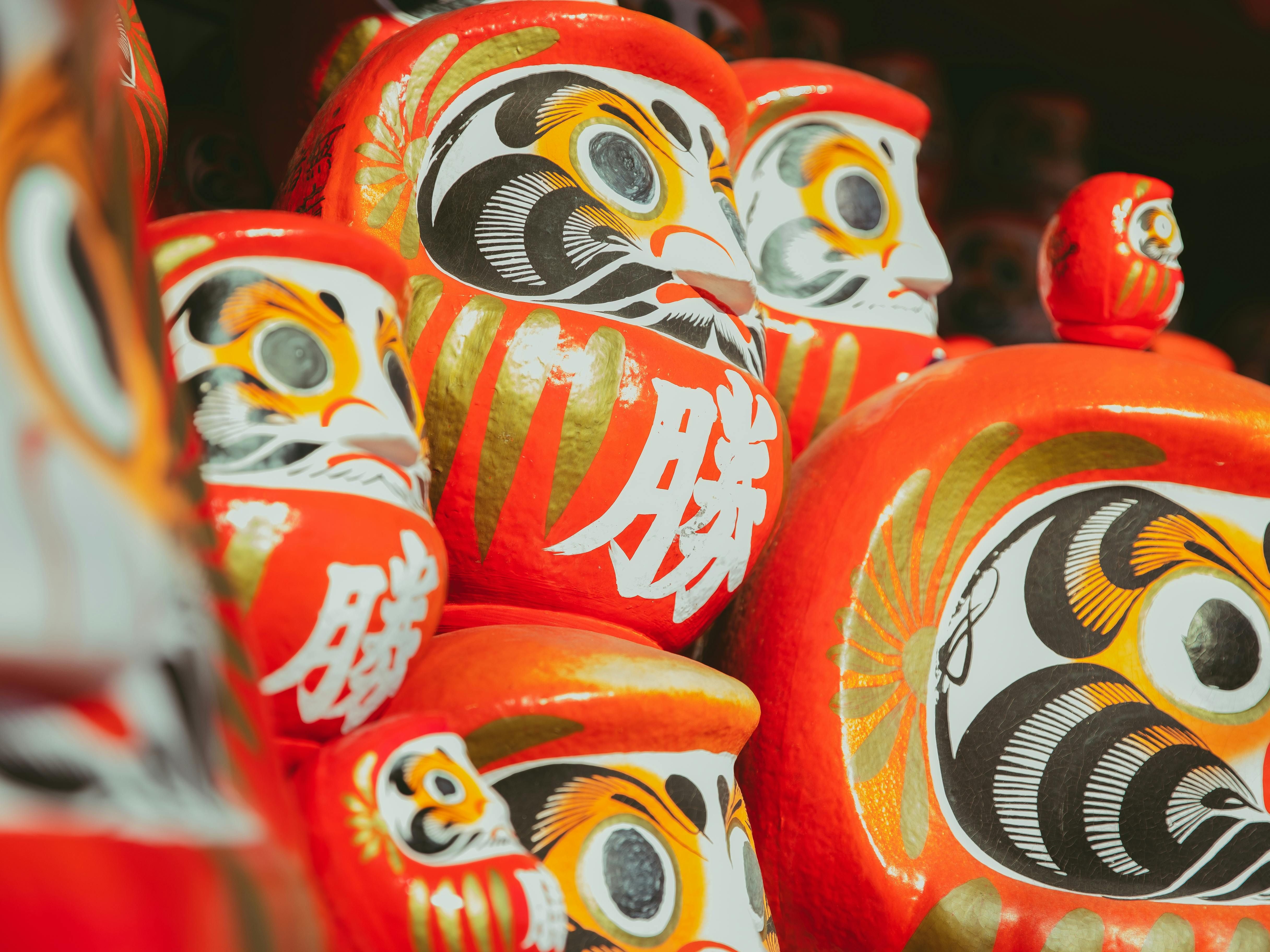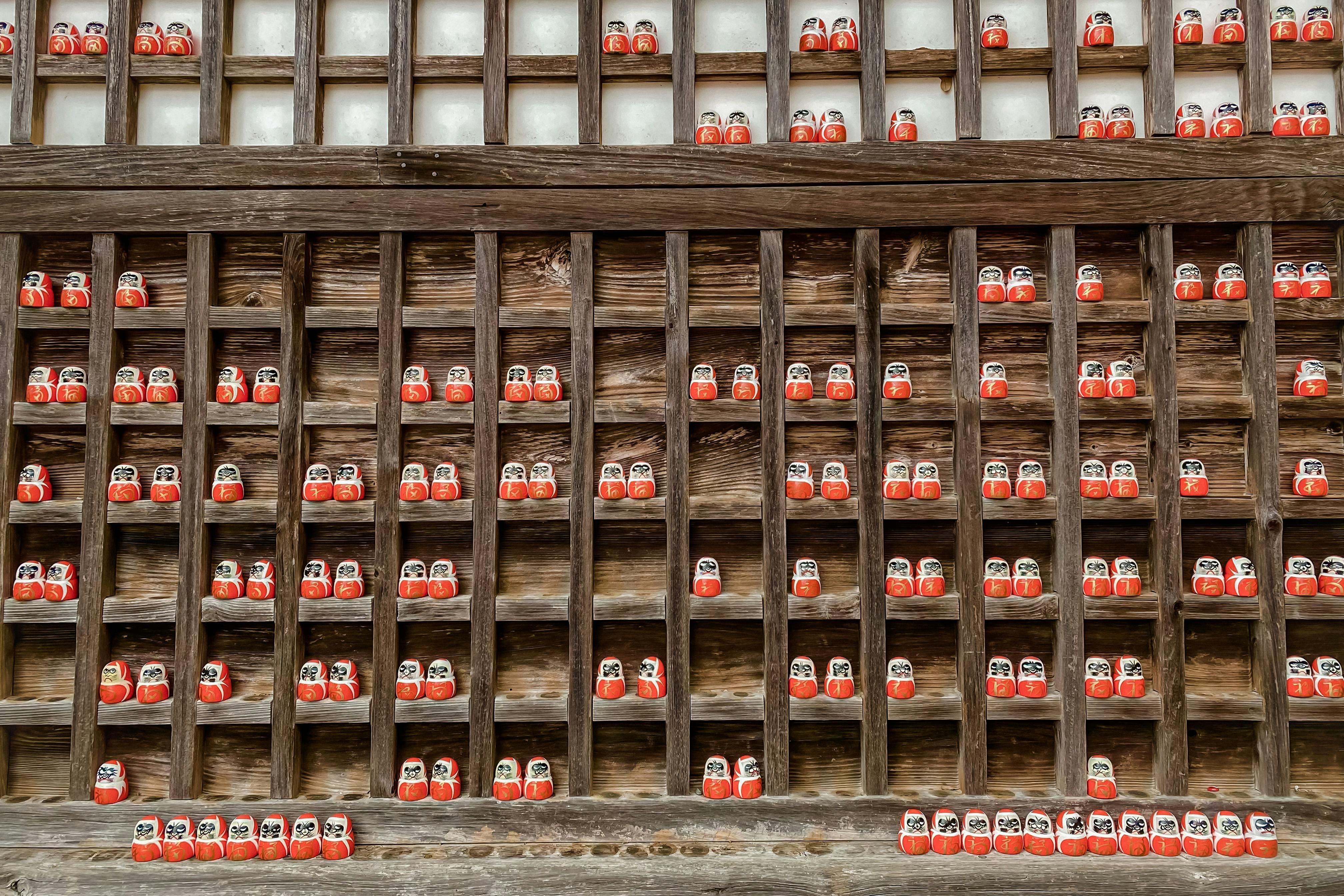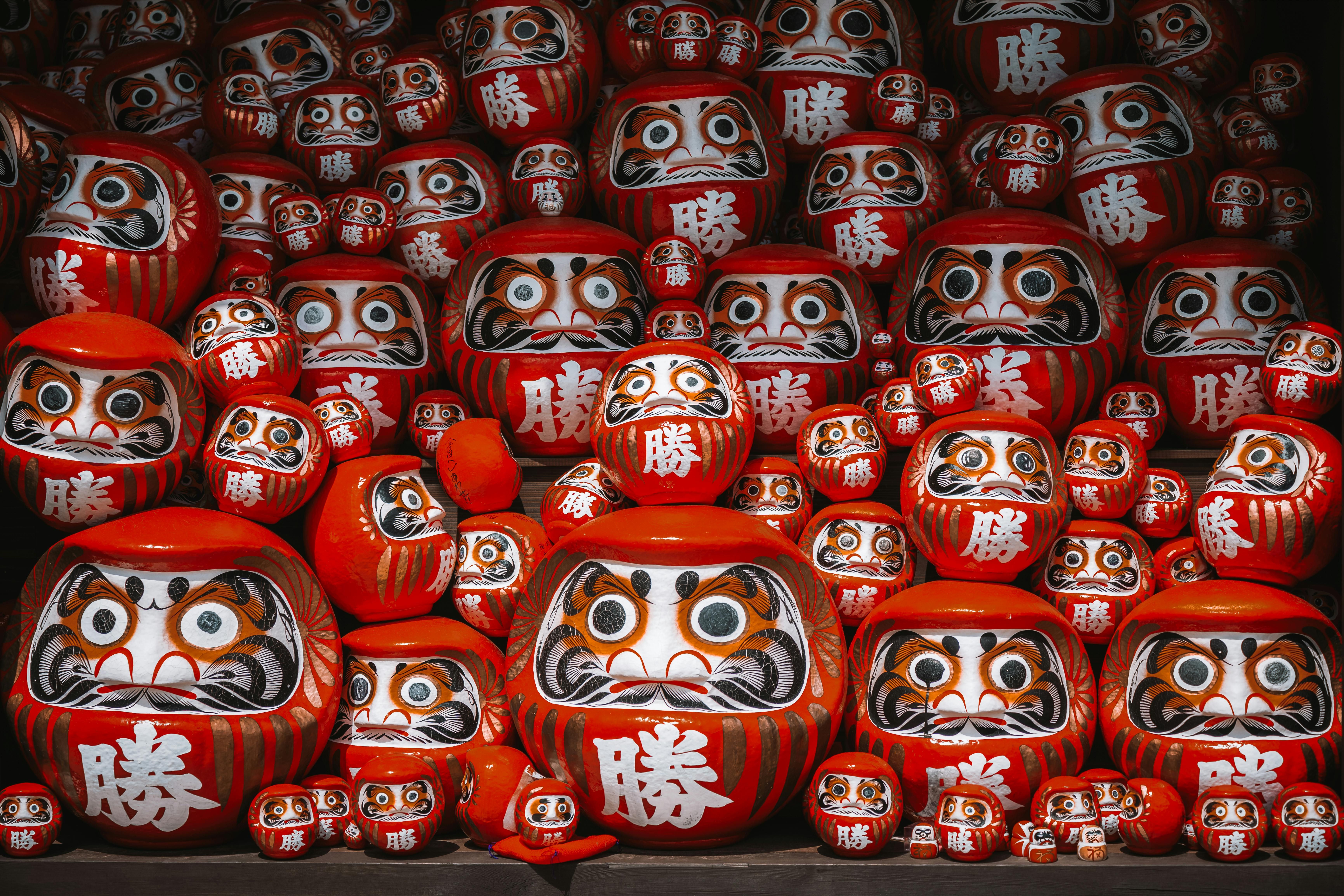Originating in Japan, Daruma dolls are highly sought-after souvenirs. Yet, their origin remains a topic of interest.
At Katsuo-ji Temple, the Daruma dolls scowl down from every nook. They hide among tree branches, pile up around altars, and line the winding pathways, standing out with their bold red hues among the hillside forest.
Established over a thousand years ago, this 1,300-year-old temple, found an hour from downtown Osaka in Minoh National Park, has earned the nickname of the "Daruma temple of success."
According to the temple, Katsuo-ji first became known as the "Daruma temple" about 100 years ago, around the same time the site started selling the iconic dolls. Considered a lucky talisman in Japan and a symbol of determination and ambition, Daruma dolls have also become one of the country's most recognized and popular souvenirs.
The temple has long been associated with success and victory, attracting emperors and shoguns seeking blessings. Today, it's frequented by locals before exams or important business meetings.
Marco Fasano, an Italian tour guide living in Japan and founder of Tanuki Stories, has visited Katsuo-ji multiple times, including before taking his Japanese Language Proficiency Test. Fasano discovered the temple during his research for tour itineraries.
"There is a whole process when you buy the Daruma," explains Fasano. "You need to think of something that you want to achieve, write the wish, paint one eye, purify it with some incense, and then take it with you."

Unlike other lucky talismans or rituals, Daruma dolls are not just about making a wish and hoping it comes true.
"Every time you look at your Daruma, you need to remember that wish and ask yourself, 'What am I going to do today to achieve that goal?' It's about reminding you that you need to work on it," says Fasano.
The second eye is only filled in once the goal is achieved, after which the Daruma can be returned to the temple.
"When you go there and see that all these people had their wish granted, it's proof that you can do something about your wish as well," says Fasano.
Round and red with scowling expressions, the dolls represent Bodhidharma, or "Daruma" in Japanese, the fifth-century monk who founded Zen Buddhism. Followers believe that Bodhidharma meditated for so long that he lost his limbs, illustrated by the doll's rounded shape, which is weighted at the base so it will always stand back up when knocked over.

"It became a symbol of perseverance," says Fasano. "According to Zen Buddhism, the answers are already inside you. It's not something that comes suddenly as a gift, but something that you need to work on diligently and find in yourself."
In another legend, the monk was said to have cut off his eyelids to avoid falling asleep during meditation, one explanation for the doll's wide-eyed stare. Darumas are rich with auspicious imagery, from the lucky red color to the thick eyebrows and beard, which represent cranes and turtles, two animals associated with good luck and longevity in Japan.
Although Katsuo-ji is the most famous Daruma temple in Japan, Hōrin-ji "Darumadera" Temple in nearby Kyoto boasts a collection of around 8,000 Darumas, with many stored in a special hall funded by the temple's worshippers.
While Daruma dolls can be found all over Japan, approximately 80% of them are manufactured in Takasaki, a town in Gunma prefecture in the Kanto region, where the traditional papier-mache craft has been practiced for around 200 years. Shorinzan Daruma-ji Temple says it started selling the dolls about 220 years ago and holds an annual "Daruma Market."
Katsuo-ji offers visitors two different types of Darumas: the Kachi-Daruma, the traditional Daruma known as "the winning Daruma," which is used to set specific goals; or the Daruma-Mikuji, called "the fortune-telling Daruma," which is only found at Katsuo-ji. Unlike regular Darumas, visitors must ask a question before selecting a fortunetelling Daruma-Mikuji, similar to receiving a fortune cookie.

"Many visitors take photos and videos of the Daruma-Mikuji placed freely by worshippers around the temple grounds," says Yusuke Yamada, a spokesperson for Katsuo-ji Temple. "It's a once-in-a-lifetime experience for many visitors."
Japan, in 2024, welcomed a record 36.8 million overseas visitors, marking a 15% increase from pre-pandemic levels. Although Osaka is the second most popular prefecture for overnight stays, Katsuo-ji is rarely on the itinerary, with the temple welcoming between 800,000 to 1 million visitors annually, around 70-80% of whom are from overseas.
"Japanese visitors tend to come for the autumn leaves and during New Year, while overseas visitors come throughout the year," Yamada adds.
Fasano, who has been based in Osaka since 2023, believes the city is severely underrated. "People tend to think that there's nothing to do in Osaka. It's a city that deserves much more attention," he says, adding that tourists often don't budget enough time to visit places like Katsuo-ji, which can take a half-day to get to and visit.
To bring in more visitors, Katsuo-ji introduced a stamp rally in May last year. By visiting six check-in points around the temple grounds in sequence, visitors can collect stamps and create a single image, symbolizing the process of goal-achievement.

"The stamp rally, like the Darumas, reflects the idea of a deliberate plan and taking it one step at a time," says Fasano, hoping that the temple will gain more recognition and inspire more visitors to explore the region. If you want to buy a Daruma, "getting it from Katsuo-ji gives a sense that is more powerful," he adds.
At Katsuo-ji Temple, Yusuke Yamada, a spokesperson for the temple, mentions that there are two types of Daruma dolls offered to visitors: the Kachi-Daruma, a traditional Daruma also known as the "winning Daruma," which is used to set specific goals; or the Daruma-Mikuji, a special fortune-telling Daruma that can only be found at Katsuo-ji. Marco Fasano, an Italian tour guide living in Japan, emphasizes the importance of the deliberate process of buying a Daruma doll, as one must think of a wish, write it down, paint one eye, purify it with incense, and work towards achieving the goal before filling in the second eye and returning the Daruma to the temple. The temple, established over a thousand years ago, attracts approximately 800,000 to 1 million visitors annually, with around 70-80% of them being from overseas.








